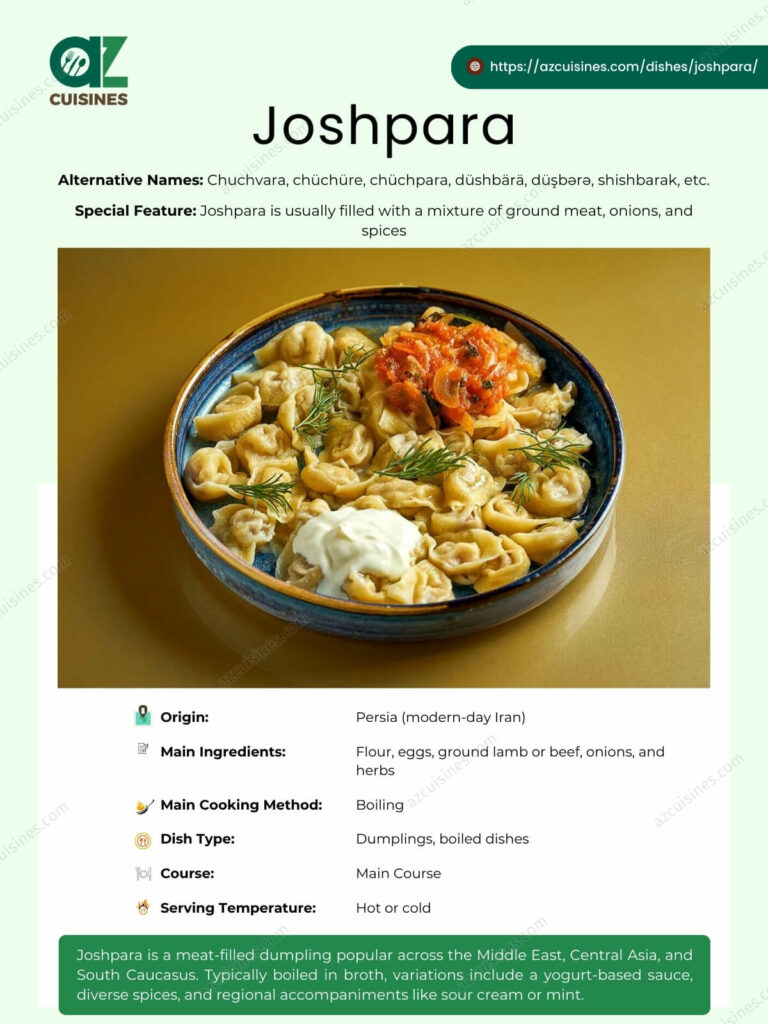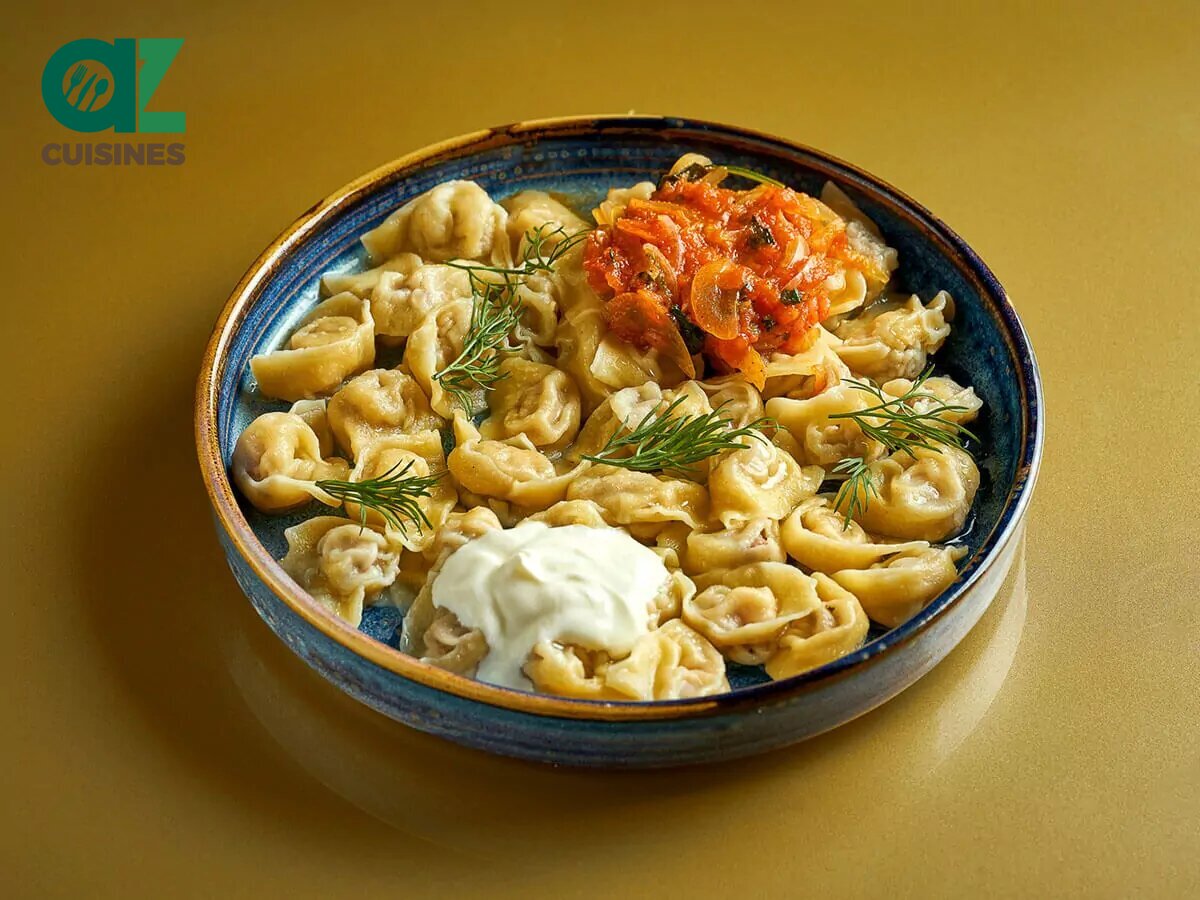Joshpara: Basic Information
Pronunciation
Alternative Name(s)
Dish Type
Course
Mealtime
Popular Variations
Joshpara: Ingredients and Preparation
Main Ingredients
Main Cooking Method
Preparation Process
Joshpara: A Deep Dive
Cultural Significance
Taste
Texture
Aroma
Color
Serving Style
Serving Temperature
Accompaniment
Occasions
Seasons
Special Diets
Calories
Popularity
- Central Asia: Kazakhstan, Kyrgyzstan, Tajikistan, Uzbekistan, Turkmenistan
- East Asia: Uyghur cuisine (China)
- West Asia: Iran, Iraq, Jordan, Lebanon, Palestine, Syria, Saudi Arabia, Azerbaijan
Popular Similar Dishes
- Manti
- Momo
- Jiaozi
- Gyoza
- Pelmeni
- Gnocchi
- Ravioli
- Khinkali
- Semmelknödel
Popular Dining Area
Joshpara, usually known as shishbarak or chuchvara, is a traditional type of dumpling with roots in pre-Islamic Persia.
Today, it is found in many Middle Eastern, Central Asian, and South Caucasian countries. Its name consists of two early Persian words for “bit” and “to boil.”
People prepare joshpara by wrapping unleavened wheat dough squares around a filling of ground and spiced meat. Lamb and beef are popular choices, while pork is excluded.
The meat is mixed with onions, salt, black pepper, and aromatics like thyme. Joshpara is typically boiled and served in a meat broth.
However, the Middle Eastern take on the dumpling is prepared in a yogurt-based sauce and garnished with nuts.
In terms of accompaniments, Central Asian joshpara usually goes with sour cream, syuzma (strained yogurt), or a sauce with chopped greens, chili peppers, and tomatoes or vinegar.
Read on to discover more wonderful facts about joshpara, such as the must-know regional variations, pros and cons of the dumpling, commonly asked questions, and similar dishes.
Key Points
Joshpara Images
What Are Popular Regional Variations of Joshpara?
There are 5 famous regional joshpara variations, as explained below:
These joshpara versions use many different ingredients and condiments, but they all share the upsides and downsides of joshpara.
Pros And Cons of Eating Joshpara
Here is a summary of the strengths and weaknesses of joshpara:
Pros
Cons
After covering the pros and cons comprehensively, it’s time for me to clarify common concerns in the FAQs section.







Adam Sam
Senior Food and Drink Editor
Expertise
Food Writer & Recipe Developer, Recipe Tester, Bartender, Cooking-video Maker, Editor In Chief
Education
Adam Sam, an experienced food writer and recipe developer, is passionate about blending diverse culinary traditions, national dishes, and innovative beverages, showcasing his proficiency in both traditional and modern recipe testing.
As the Editor-in-Chief, he elevates culinary content from street food to fine dining, focusing on Western cuisine and types of drinks at azcuisines.com, and is professional in creating engaging cooking videos that simplify complex dishes and ingredients.
His passion for food is evident in his writing, where he uniquely merges various cultures, traditions, and contemporary trends, skillfully combining classic recipes with modern cooking methods.